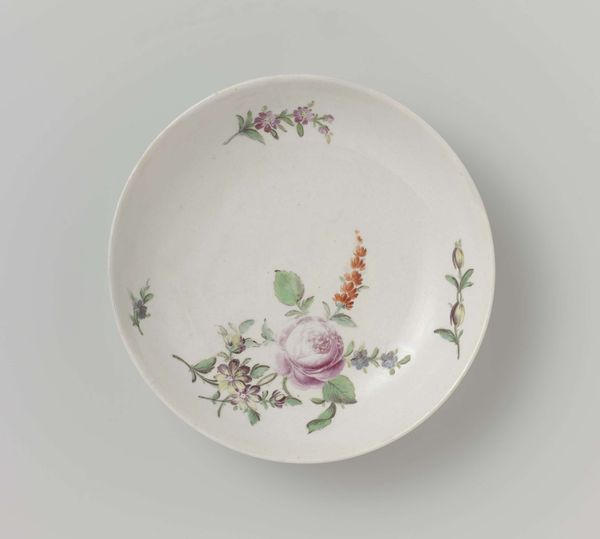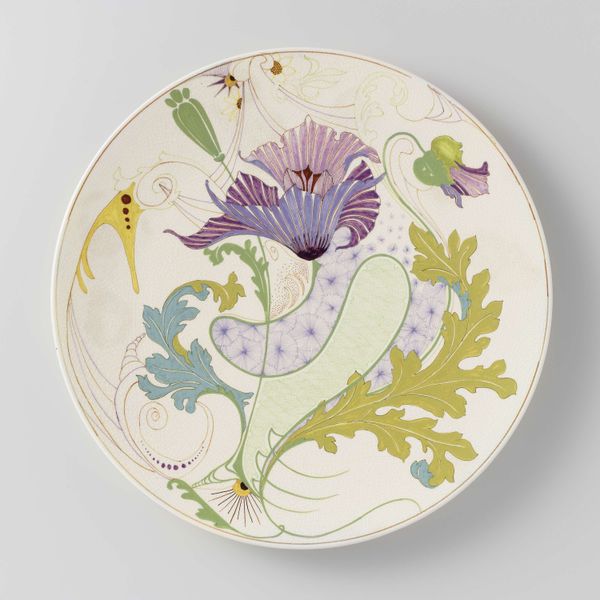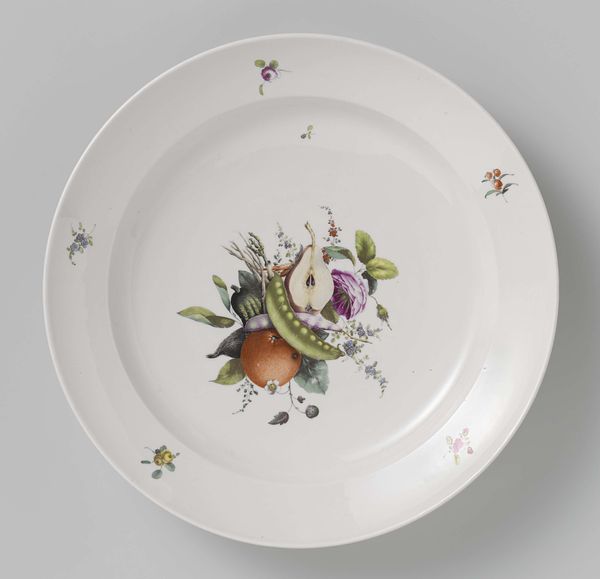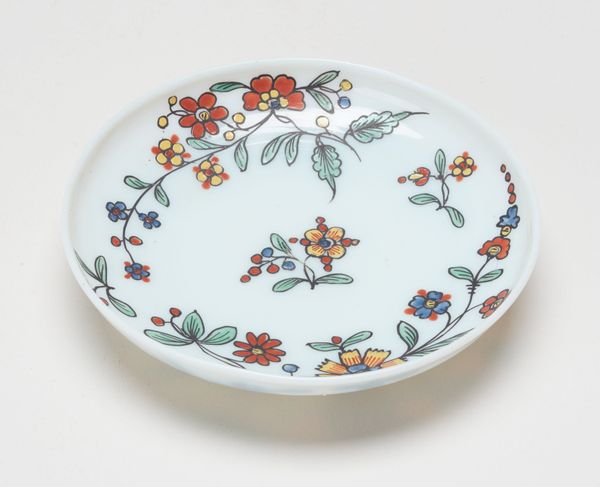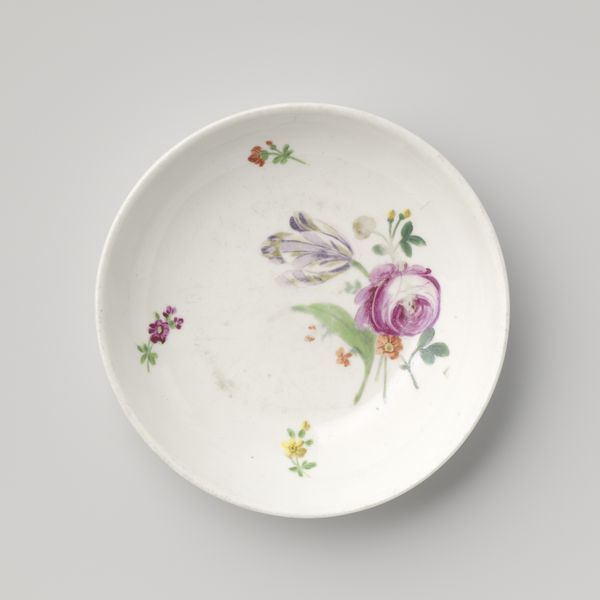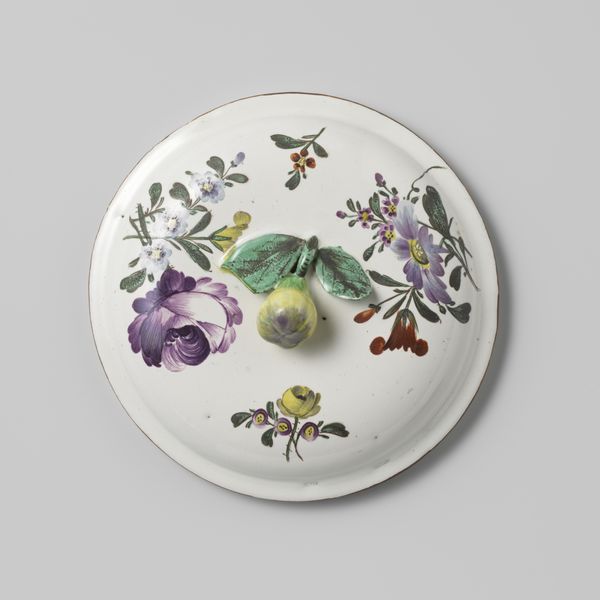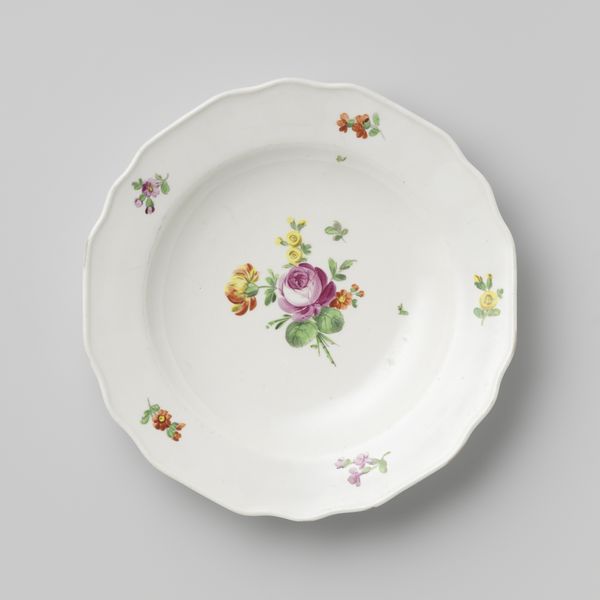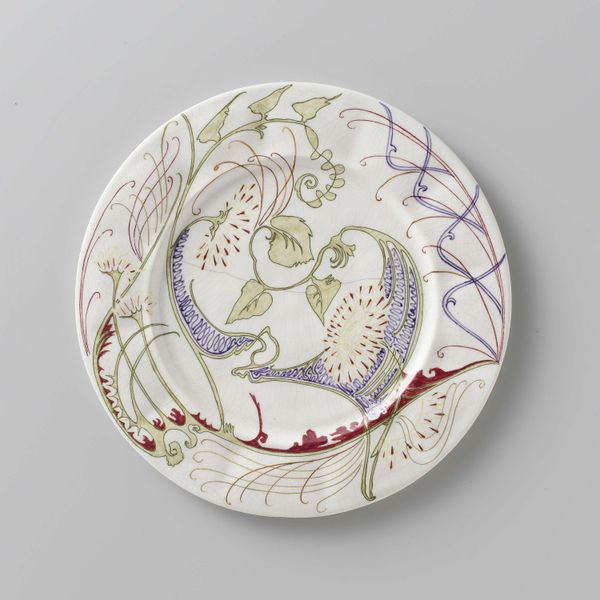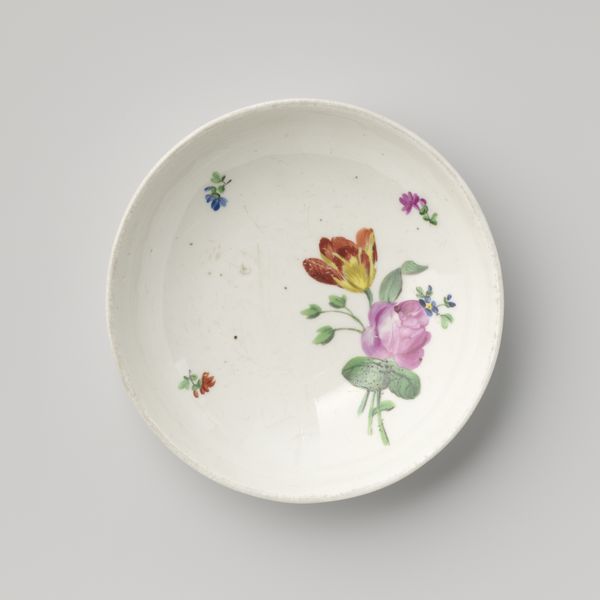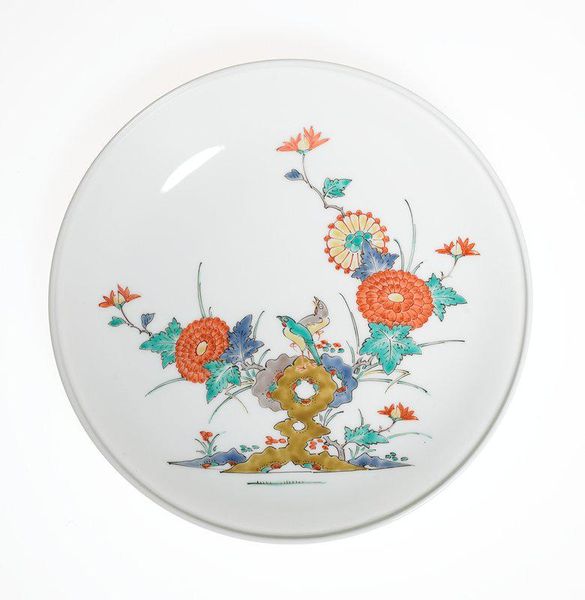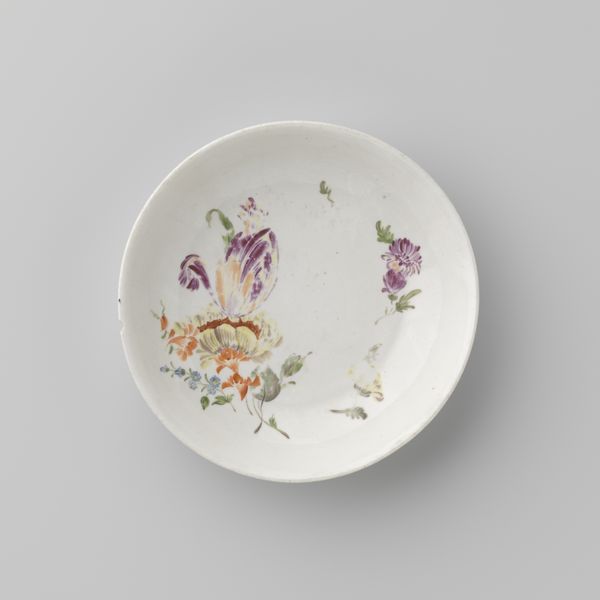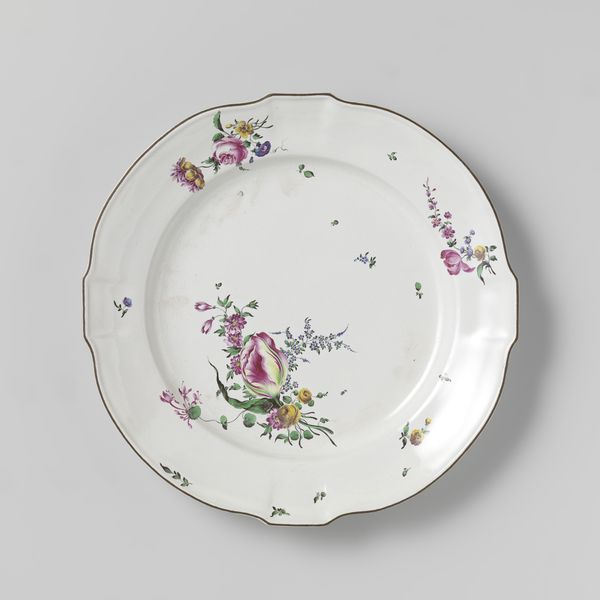
Dimensions: height cm, diameter cm
Copyright: Rijks Museum: Open Domain
Editor: Here we have the "Deksel van punchkom," or punch bowl lid, made between 1777 and 1790 by Porseleinfabriek Den Haag, crafted in porcelain and other mixed media. I’m struck by how these hand-painted fruits and vegetables feel almost... too real for something so delicate. What stands out to you about this piece? Curator: For me, it’s how this piece collapses distinctions. Look at the careful labour involved in crafting porcelain versus the mundane subject matter – vegetables, presented almost scientifically. Is it high art or decoration? What was the context of labor, who was consuming the Punch? The painting mimics the craftwork done in creating an abundant harvest of food and selling and purchasing ingredients for a meal. Is there a hidden narrative around labor in this work? Editor: That's fascinating. It almost feels like a commentary on the societal values of the time. The very act of meticulously hand-painting these common foods onto delicate porcelain transforms their perceived worth, right? It’s elevating the everyday. Curator: Precisely. It pushes us to consider the porcelain industry's relationship to broader society at that time. How were materials sourced? Who profited? Did these intricate details add prestige that justified labor practices and potentially erased labor processes and costs from consumer experience? How did the labor that resulted in food come into the kitchen from harvest and marketplace? Editor: I never thought of it that way! I was initially drawn to the beautiful details, but now I see it's hinting at something more significant – a social history embedded in the material. Curator: Absolutely. By focusing on materials and modes of production, we gain insight into what this object signifies and find connections to craft and labor. The Rococo style, with its elegant curves and embellishments, makes a visual statement but is also highlighting issues like production and commodification. Editor: So cool! It makes you wonder about all the hidden stories objects can tell us. Curator: Indeed! The object transcends being just a visually appealing piece and reveals socio-economic and material circumstances related to its creation.
Comments
No comments
Be the first to comment and join the conversation on the ultimate creative platform.
